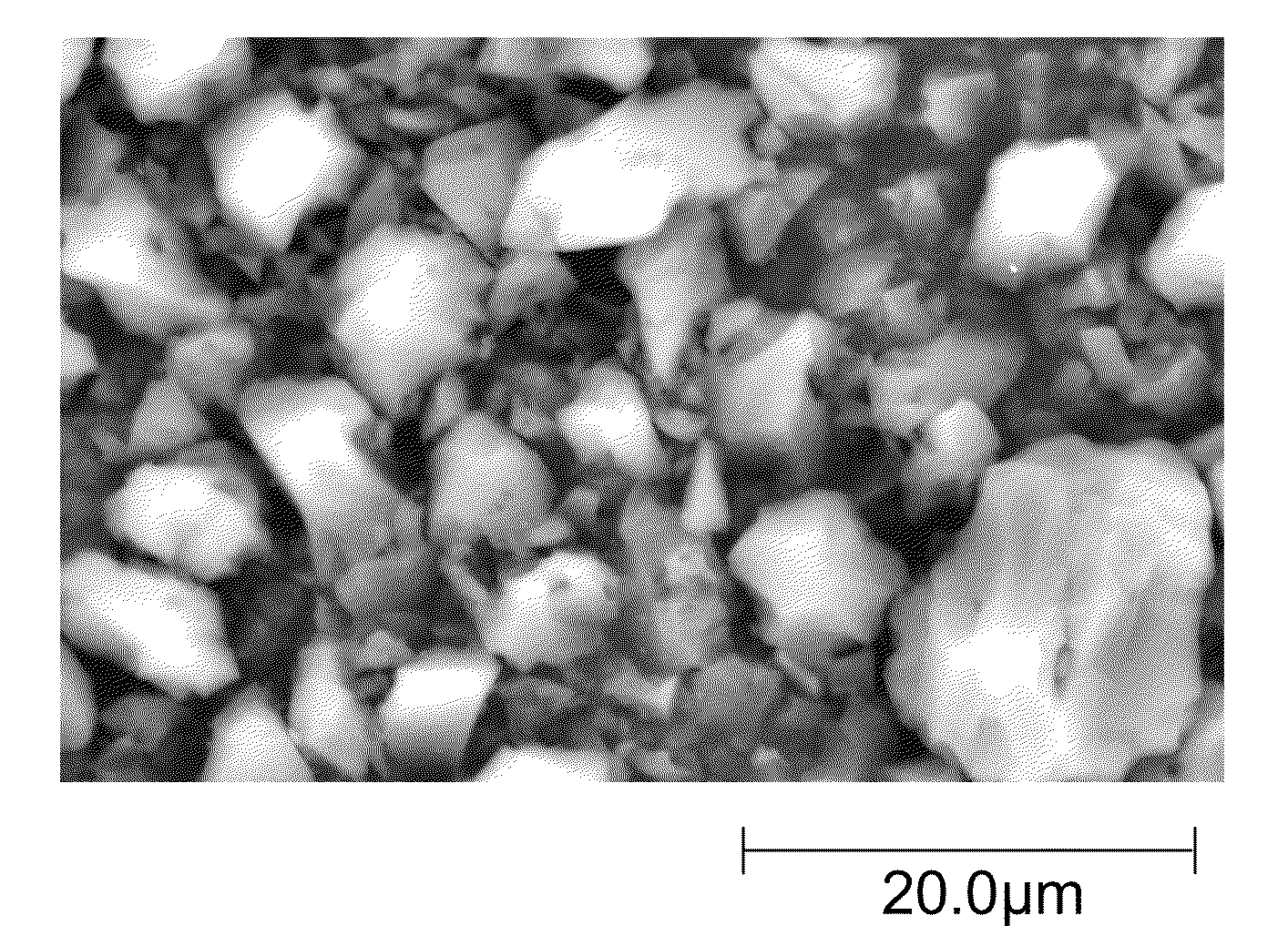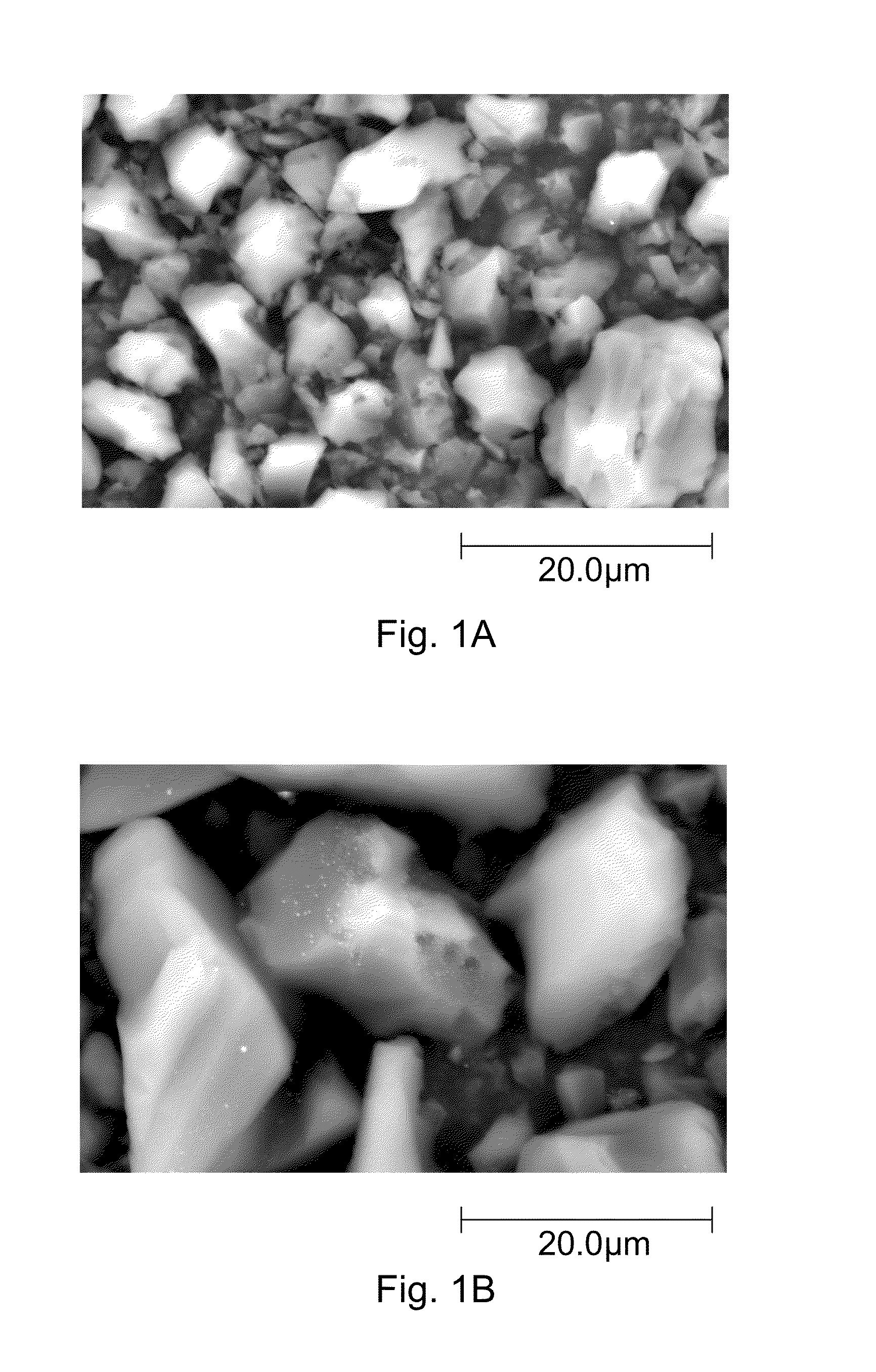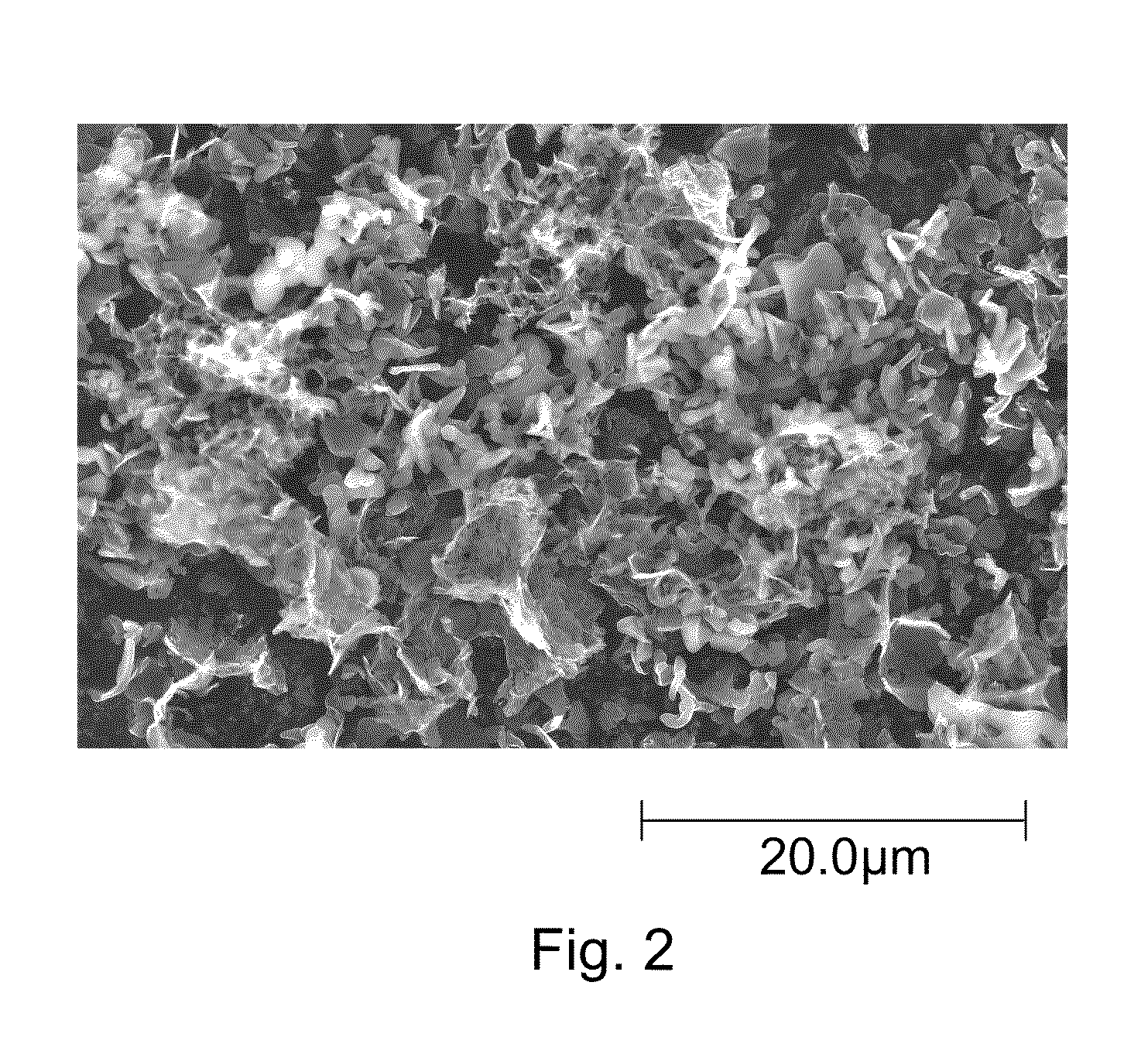Methods For Forming Activated Carbon Material For High Energy Density Ultracapacitors
a technology of activated carbon and ultracapacitors, which is applied in the field of carbon-based electrodes, can solve the problems of high cost of such carbon-based electrodes, and achieve the effects of high cost of synthetic resins, high cost of such carbon-based electrodes, and high energy density devices
- Summary
- Abstract
- Description
- Claims
- Application Information
AI Technical Summary
Benefits of technology
Problems solved by technology
Method used
Image
Examples
example 1
[0039]Wheat flour was first carbonized in flowing nitrogen at 800° C. for 2 hours. The resulting carbonized precursor was then mixed with a KOH solution (46 wt. % in water) in 1:5 (wt. / wt.) ratio of carbon:KOH. The mixture was heated in nitrogen to 800° C. for 2 hours and cooled to room temperature. The cooled mixture was washed with water and then with dilute HCl to remove potassium. Complete elimination of potassium was confirmed by monitoring the pH of the effluent. The carbon powder product was dried and ground to a fine powder (˜10 micrometers).
[0040]Eighty grams of the carbon powder was mixed with 10 grams of carbon black and 10 grams of PTFE to obtain a well-mixed mass. This mixture was then rolled on a roll mill to obtain a well-knit film having a thickness of about 100 micrometers. Carbon-based electrodes were produced by stamping the thin film.
[0041]The carbon-based electrodes were soaked in 1.5 M tetraethylammonium-tetrafluoroborate (TEA-TFB) in acetonitrile. A porous sep...
example 2
[0042]The experiment of Example 1 was repeated, except corn flour was substituted for wheat flour. The volumetric capacitance of the activated carbon electrode was 97 F / cm3.
example 3
Comparative
[0043]A comparative, resin-based carbon material was prepared by combining an aqueous solution of KOH (45 wt. %) with an aqueous phenolic resin (Georgia Pacific GP® 510D34) in a ratio of 3:1 by weight. The mixture was cured by heating in an oven at 125° C. for 24 hours and then at 175° C. for 24 hours to obtain a foam-like solid with a brown-yellow color. The cured mixture was broken into small pieces by mechanical force, placed in a graphite crucible and loaded in a retort furnace (CM Furnaces, Model 1216FL) for carbonization / activation.
[0044]The furnace temperature was ramped up at a rate of 200° C. / hr to 800° C., held at 800° C. for 2 hours, and then cooled down naturally. Throughout the heating cycle, the furnace was purged with nitrogen gas.
[0045]After cooling to ambient temperature, the carbon material was soaked in DI water for a few minutes, filtered, soaked in a known amount of 37% HCl solution (2 mL for every 1 g of carbon) for an hour, filtered, and then washed...
PUM
 Login to View More
Login to View More Abstract
Description
Claims
Application Information
 Login to View More
Login to View More - R&D
- Intellectual Property
- Life Sciences
- Materials
- Tech Scout
- Unparalleled Data Quality
- Higher Quality Content
- 60% Fewer Hallucinations
Browse by: Latest US Patents, China's latest patents, Technical Efficacy Thesaurus, Application Domain, Technology Topic, Popular Technical Reports.
© 2025 PatSnap. All rights reserved.Legal|Privacy policy|Modern Slavery Act Transparency Statement|Sitemap|About US| Contact US: help@patsnap.com



